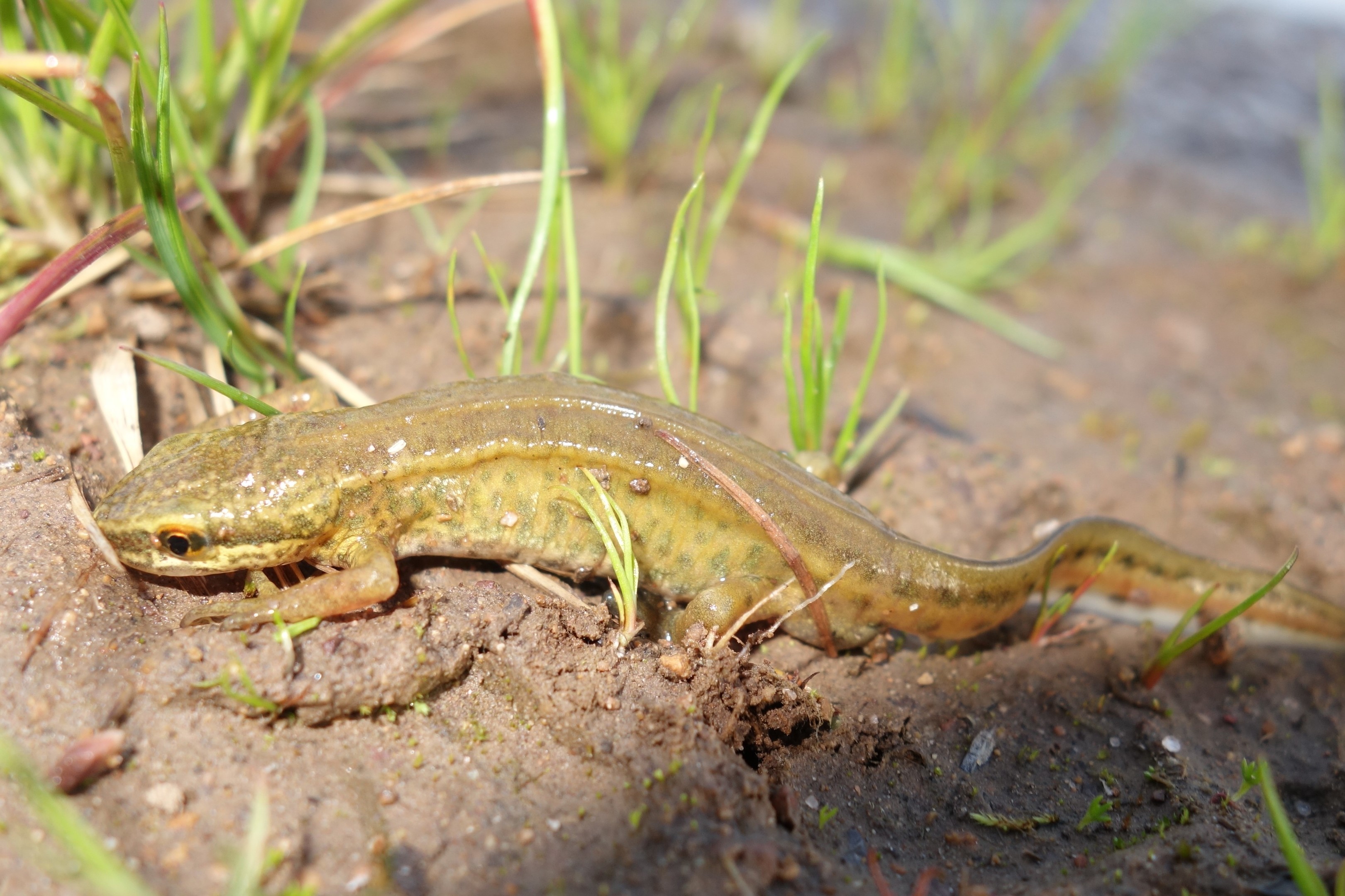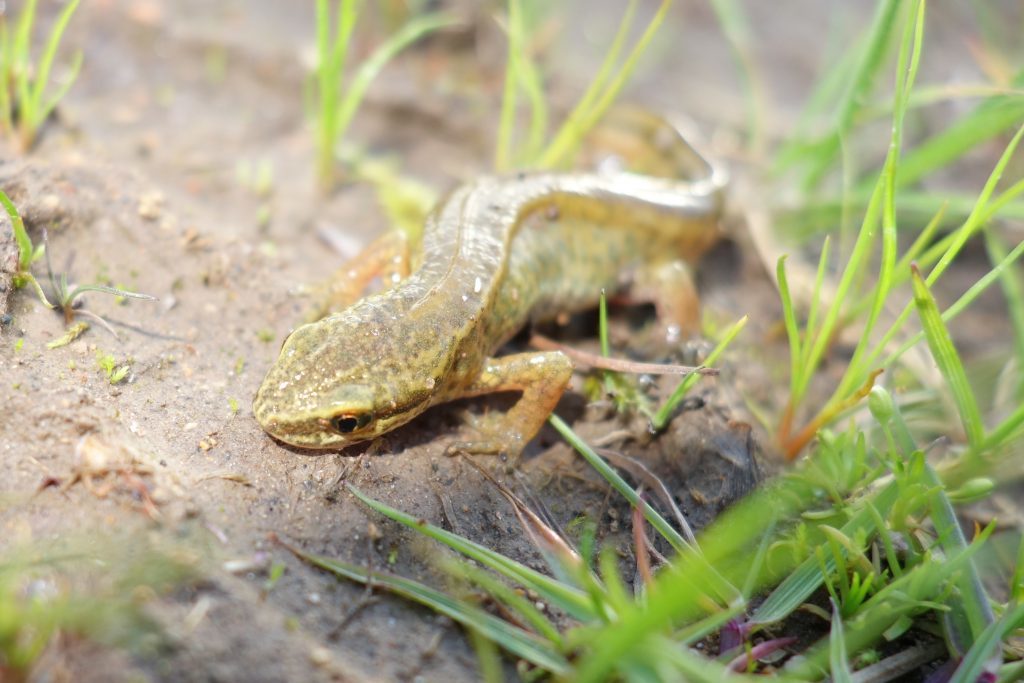It was a puddle, no more than that; a water-filled wheel rut on an upland forestry track in Perthshire, yet this little pool surged with life.
It was the palmate newts that first drew my eye, five of them lying on the muddy bottom. One of the creatures was an unusual limey-green in colour. I’ve never seen a palmate newt of such hue before and perhaps the shallowness of the water had caused the skin to match the shades of the surrounding algae.
As I watched the newts, it suddenly dawned on me that there was a real photographic opportunity here. So I returned the next day with my underwater camera, knelt by the puddle and with the lens submerged, snapped away to my heart’s content.
Unfortunately, the results weren’t great, the water being a bit murky and it was difficult to get the right focus. But I was pleased enough with one or two of the photographs. I also found a lone newt hiding in the surrounding vegetation and the pictures I took of it turned out reasonably sharp.
These newts had gathered to mate and the males inhabiting the puddle were resplendent in their breeding finery of heavily spotted tails. I’m not sure why they had chosen this watery wheel rut to breed, as it will almost certainly dry-out in the months to come, thus spelling trouble for their tadpoles.
Newts are certainly most intriguing creatures. Indeed, for many of us, their mysterious nature is best remembered in the famous incantation of the three witches stirring the boiling cauldron in Shakespeare’s Macbeth where along with “wool of bat” and “tongue of dog”, the ingredients included “eye of newt”.
I suspect newts hold such bewitching qualities because of their ability to regrow toes, or even complete legs that have become lost or damaged.
Having finished photographing the newts, I sat by the puddle for a while longer. A tiny dervish of a creature whizzed across the surface in a haphazard manner. It was a whirligig beetle, the crazy dog of the insect world, which likes nothing better than to gyrate about in the most bizarre fashion. Where does it get all that energy from?
But there is reason for such frenzied activity as these wee water beasties are scouring the water for tiny invertebrates to feast upon. I don’t think there is any considered pattern in their foraging, it more being a case of sweeping the water surface randomly in the hope of finding food by chance.
Two other small creatures scooted across the water, sporting little orangey marks down their centres. They were pirate wolf spiders, which actively seek out small prey by hunting them down. If I hadn’t stopped by the puddle to look at the newts, I could so easily have missed seeing these energetic water spiders. But as ever with nature, the more you look, the more you see.
Info
The male palmate newt has an elaborate underwater courtship display where he attracts the female by vibrating his tail. Instead of laying a mass of spawn like a frog, the female newt lays each egg individually.











